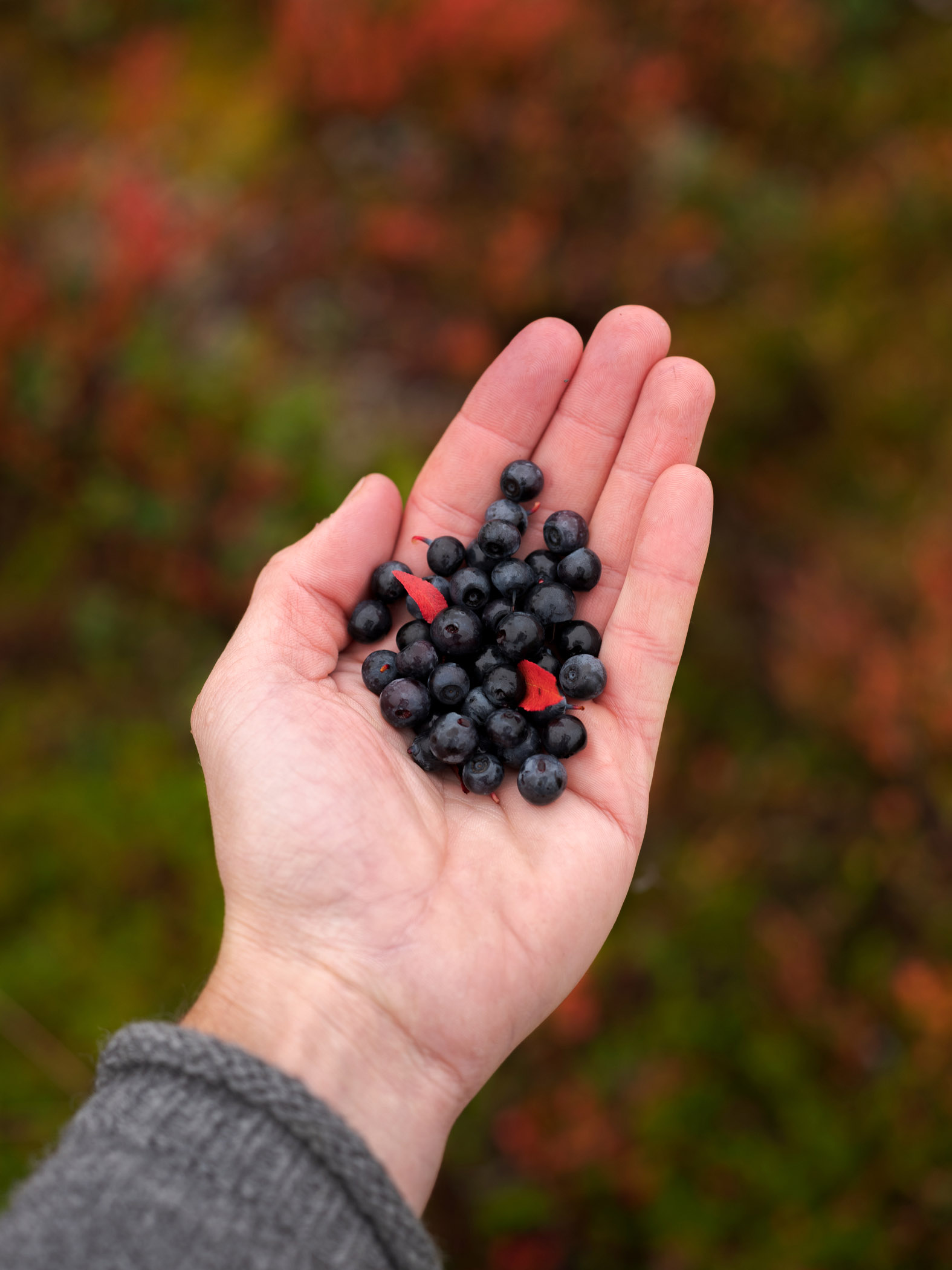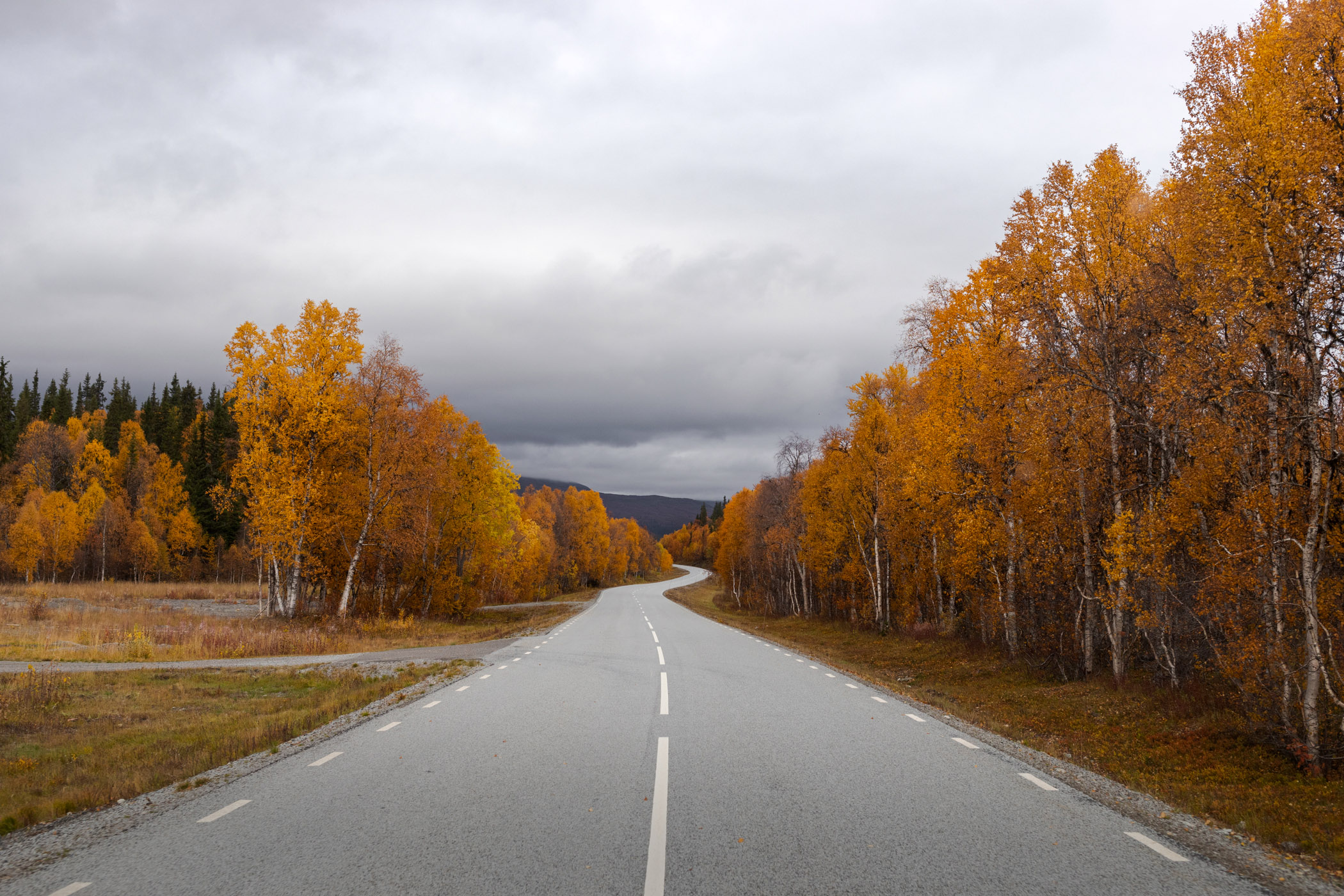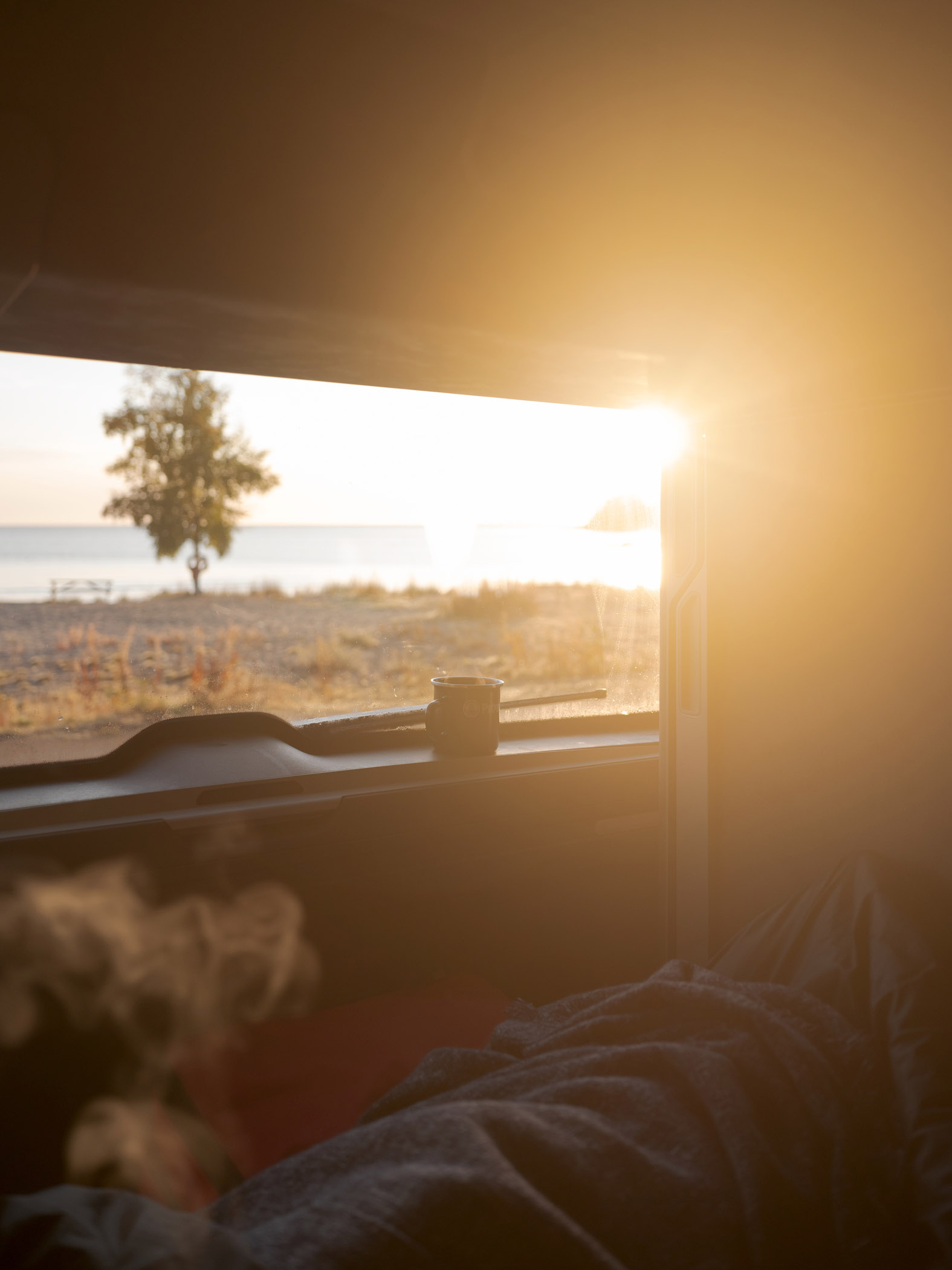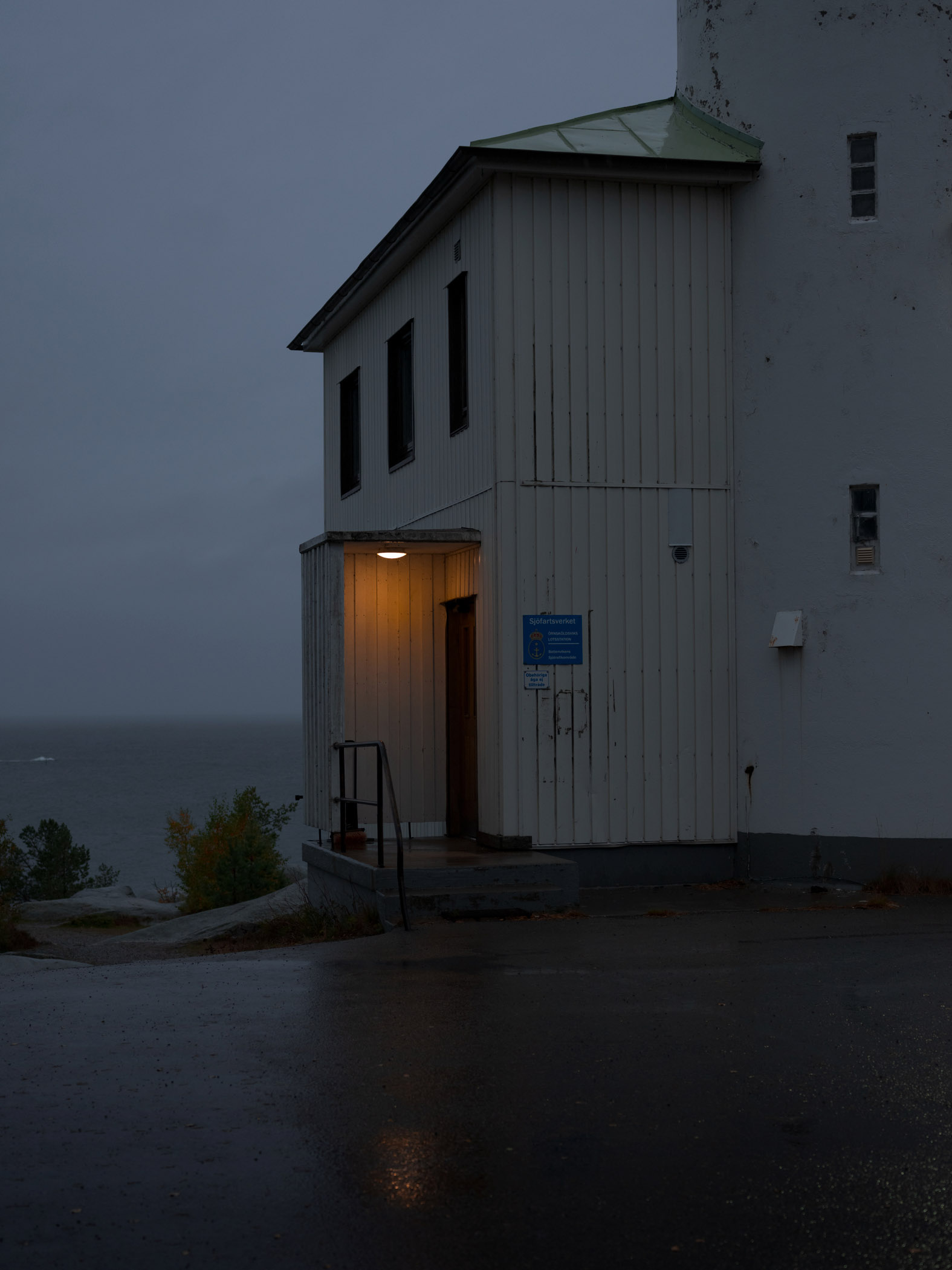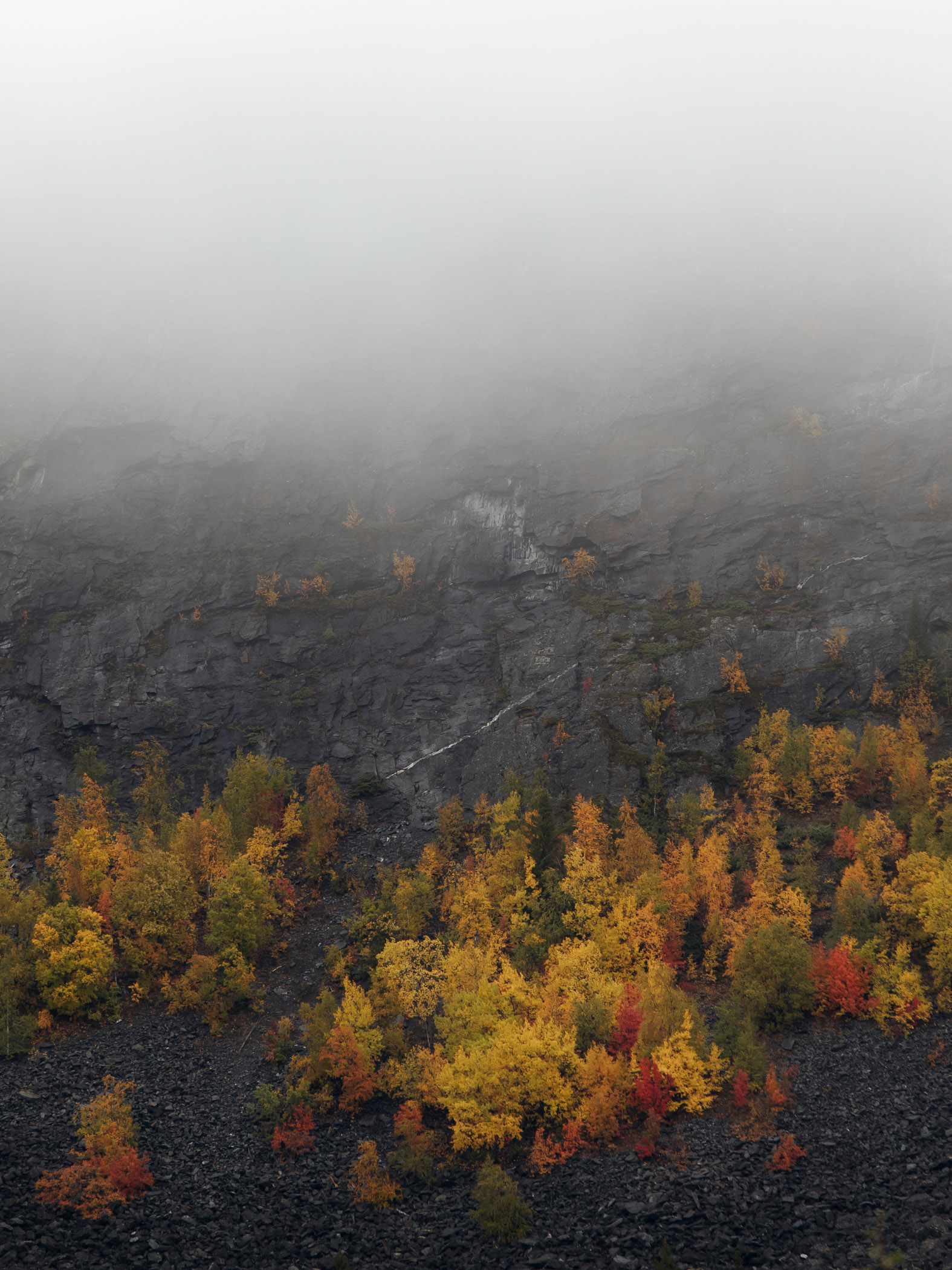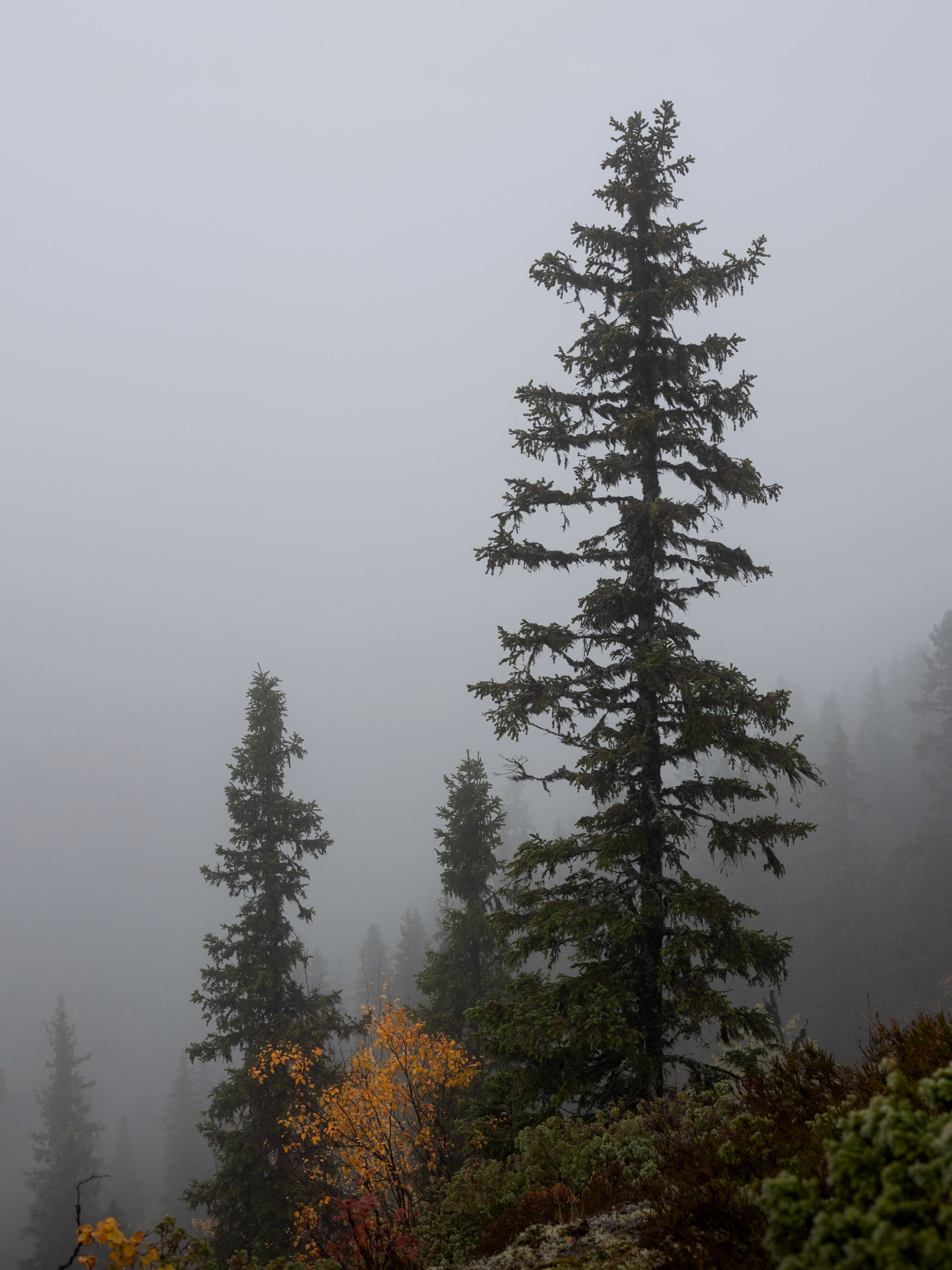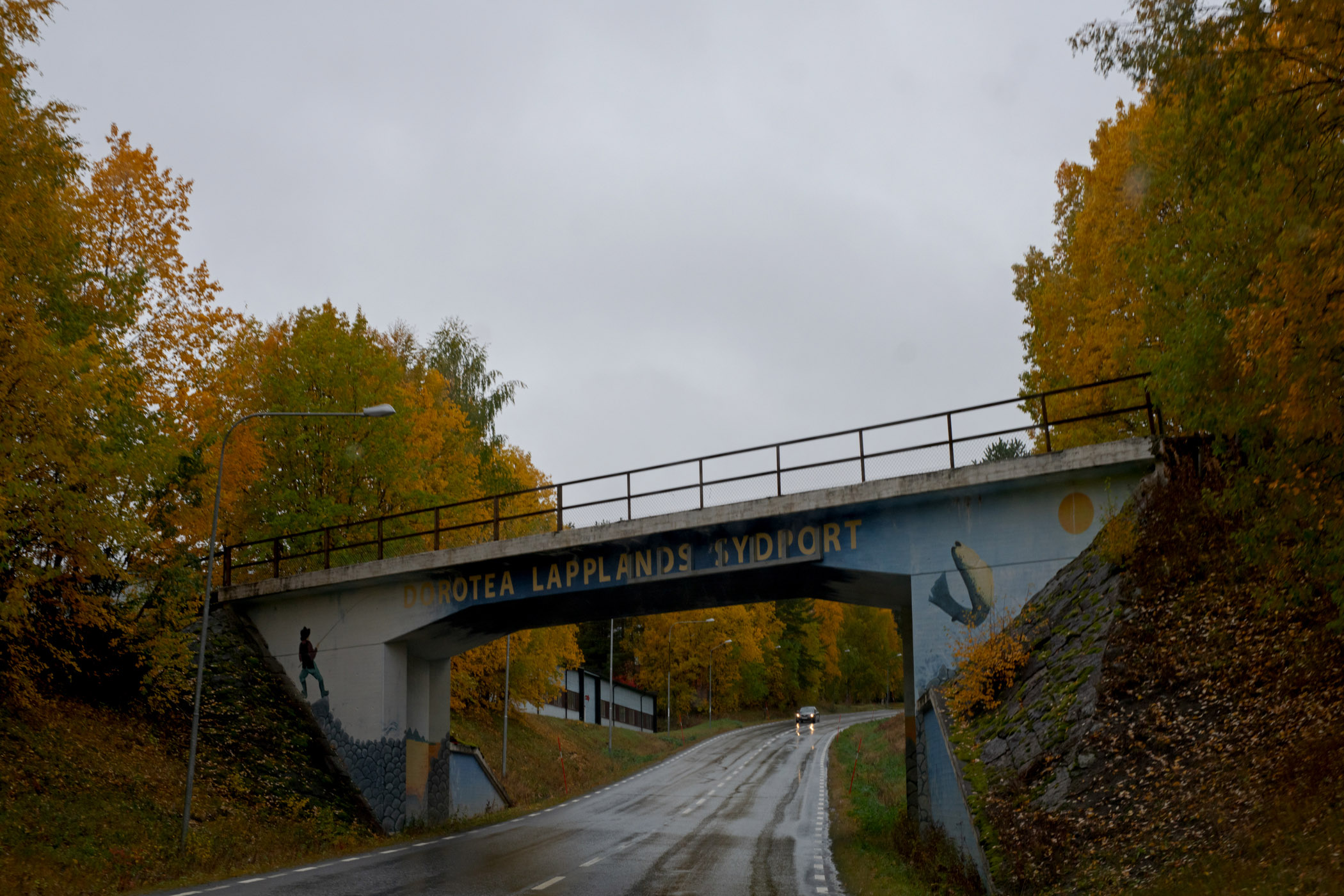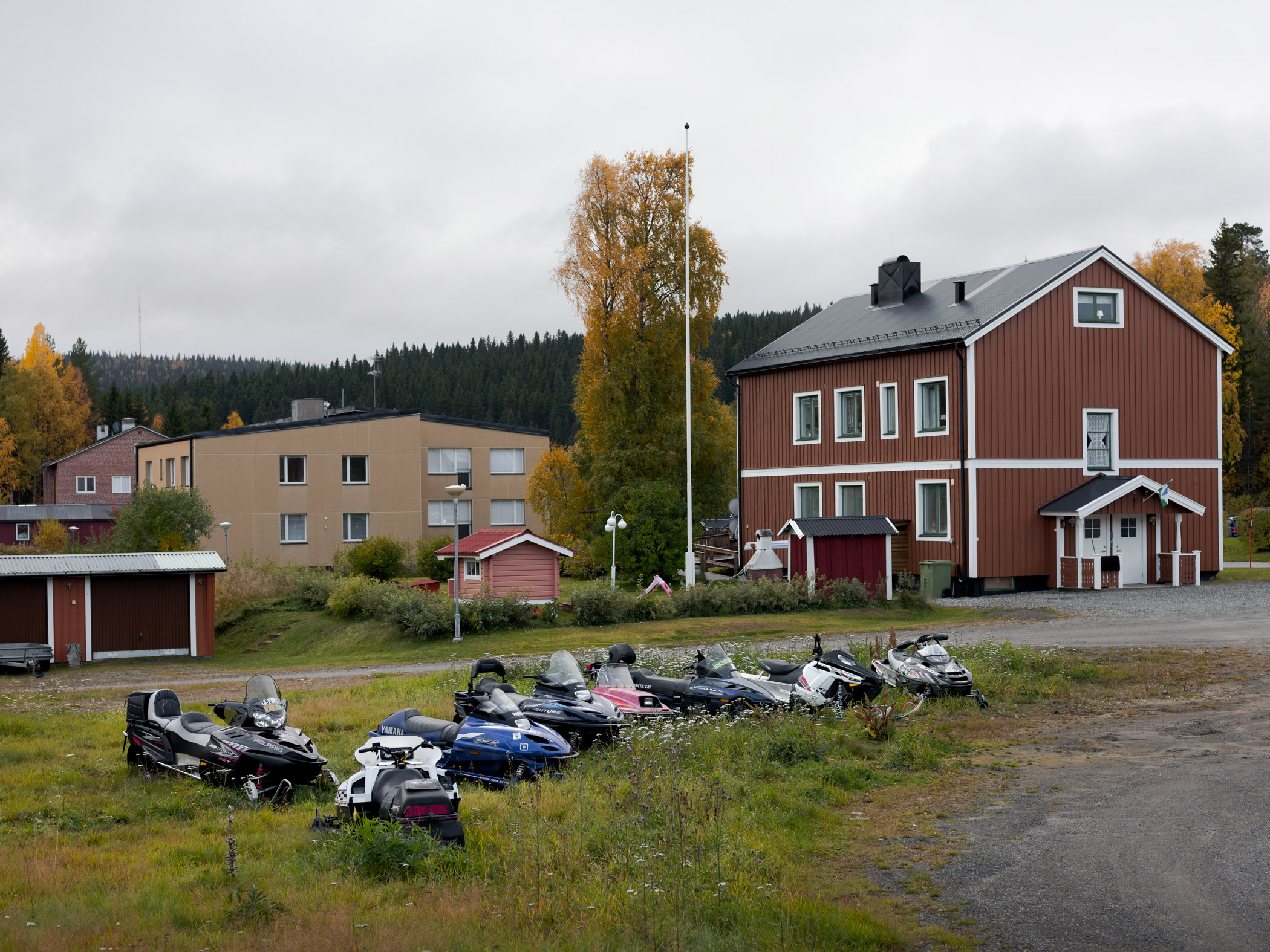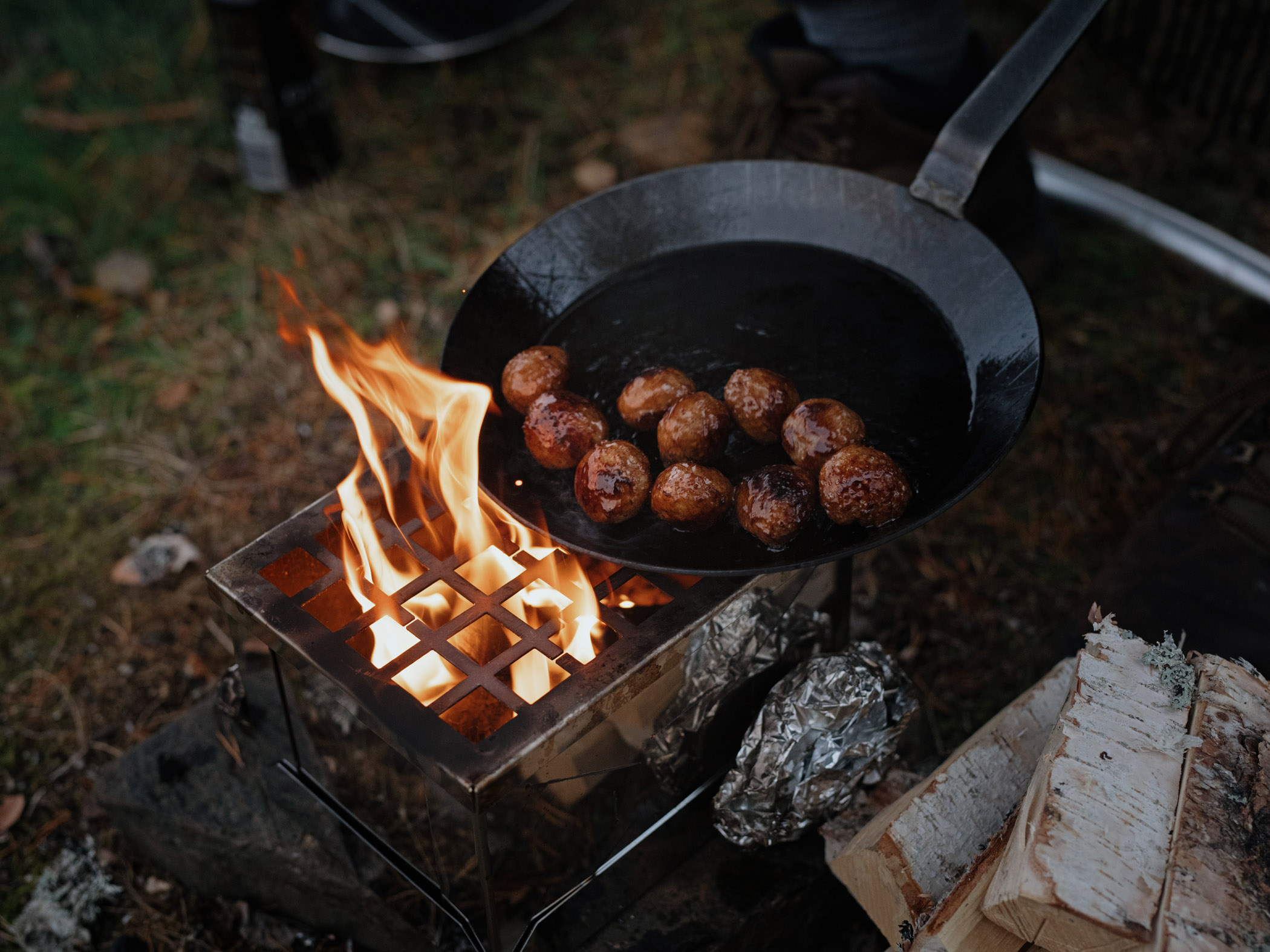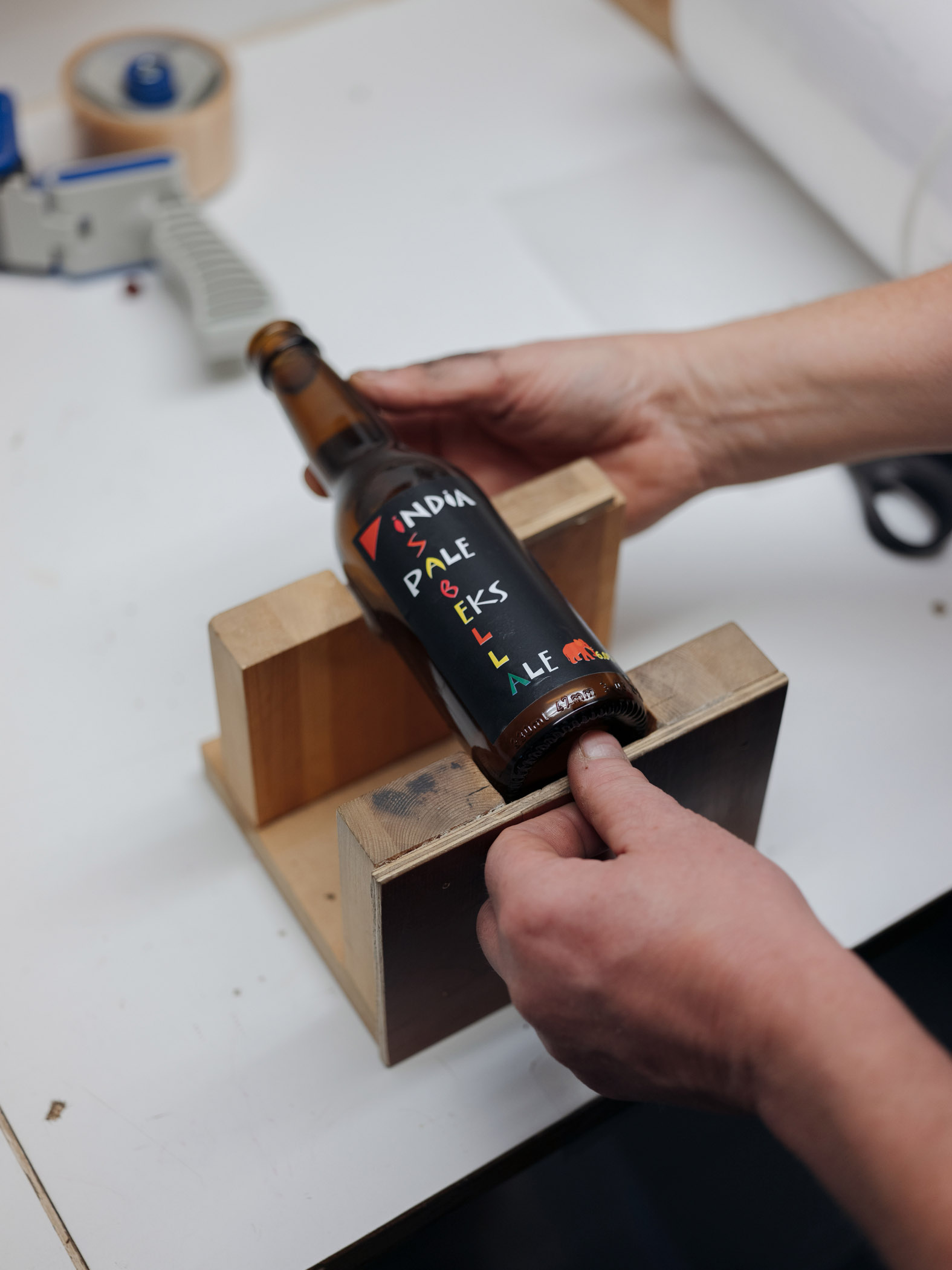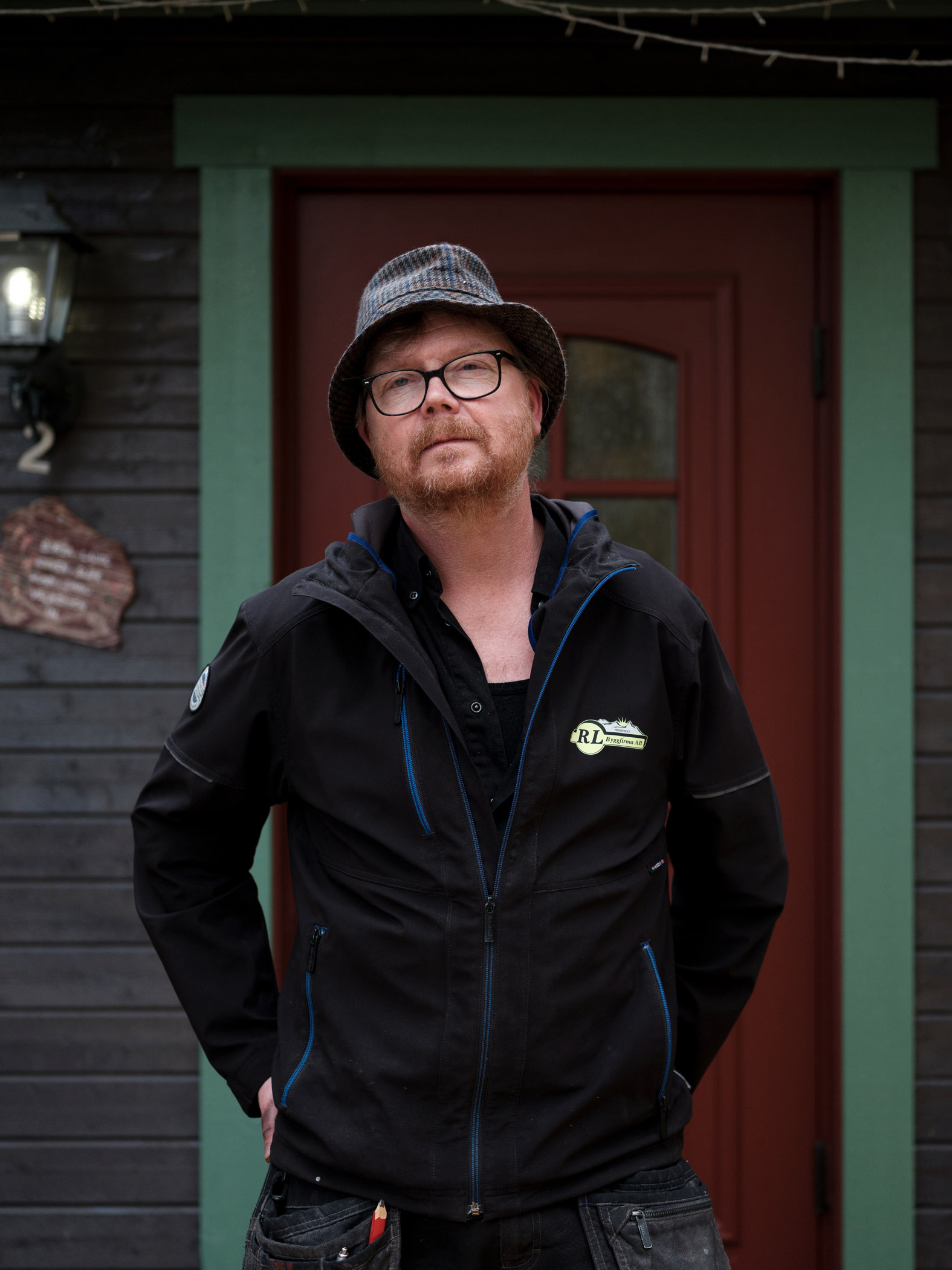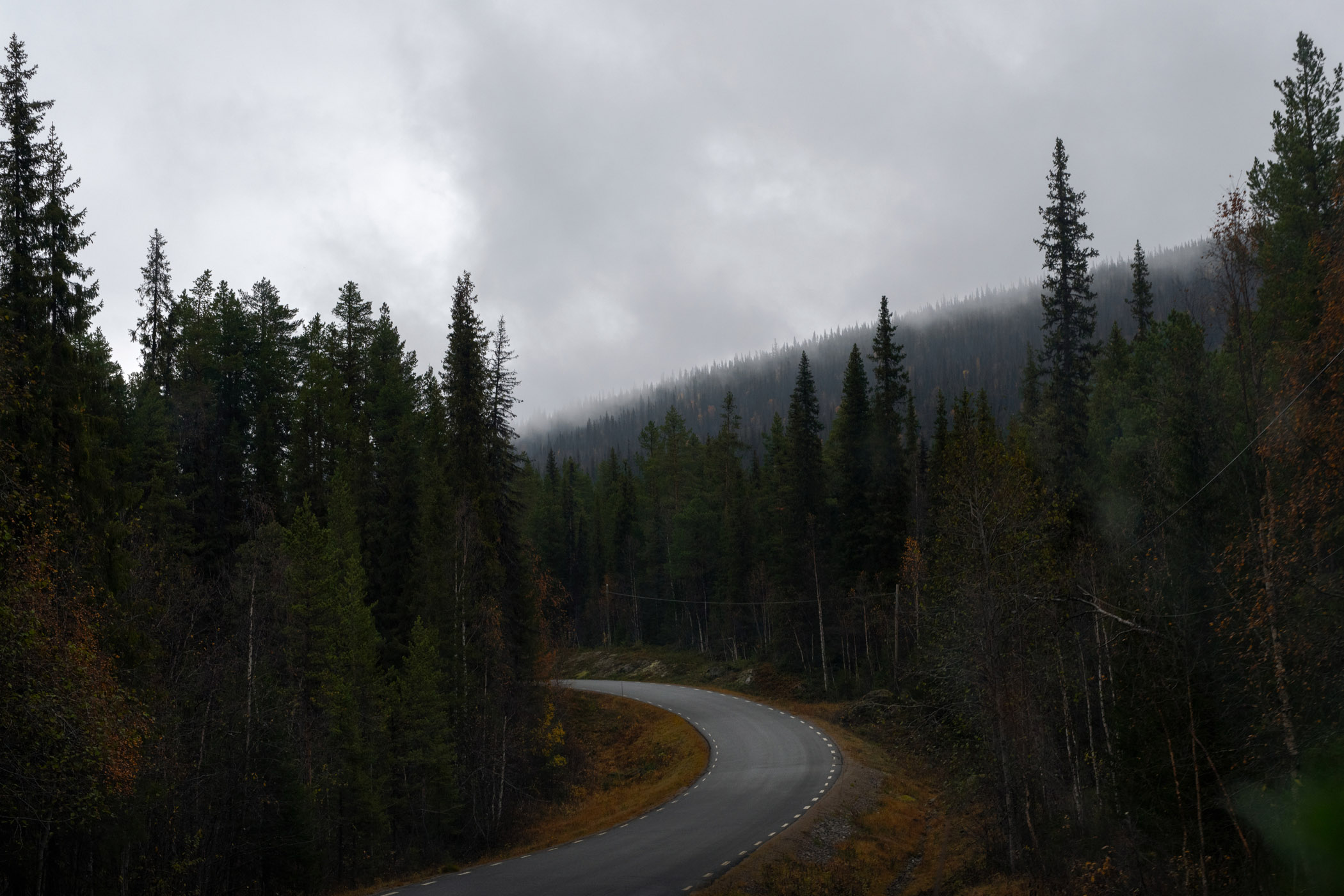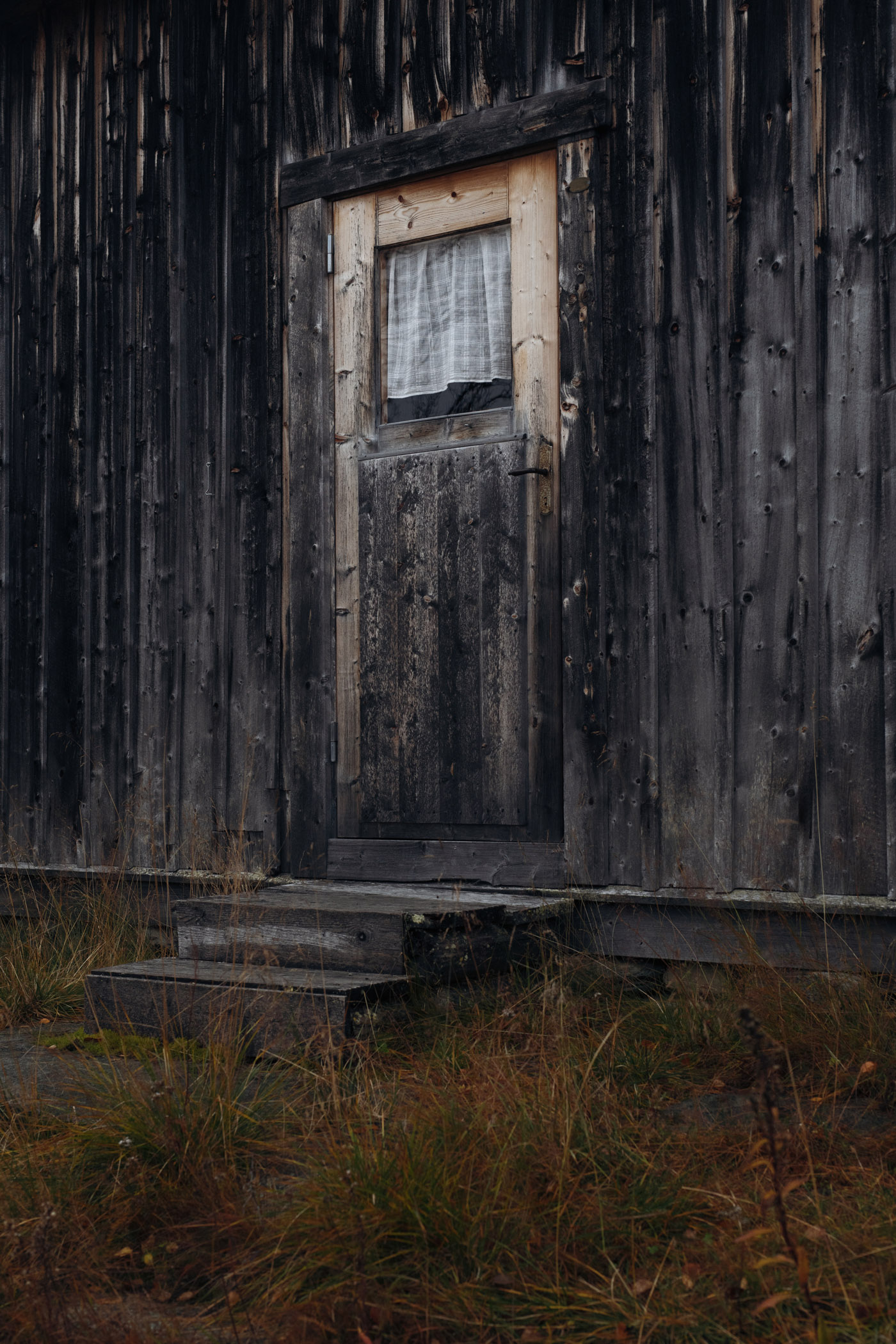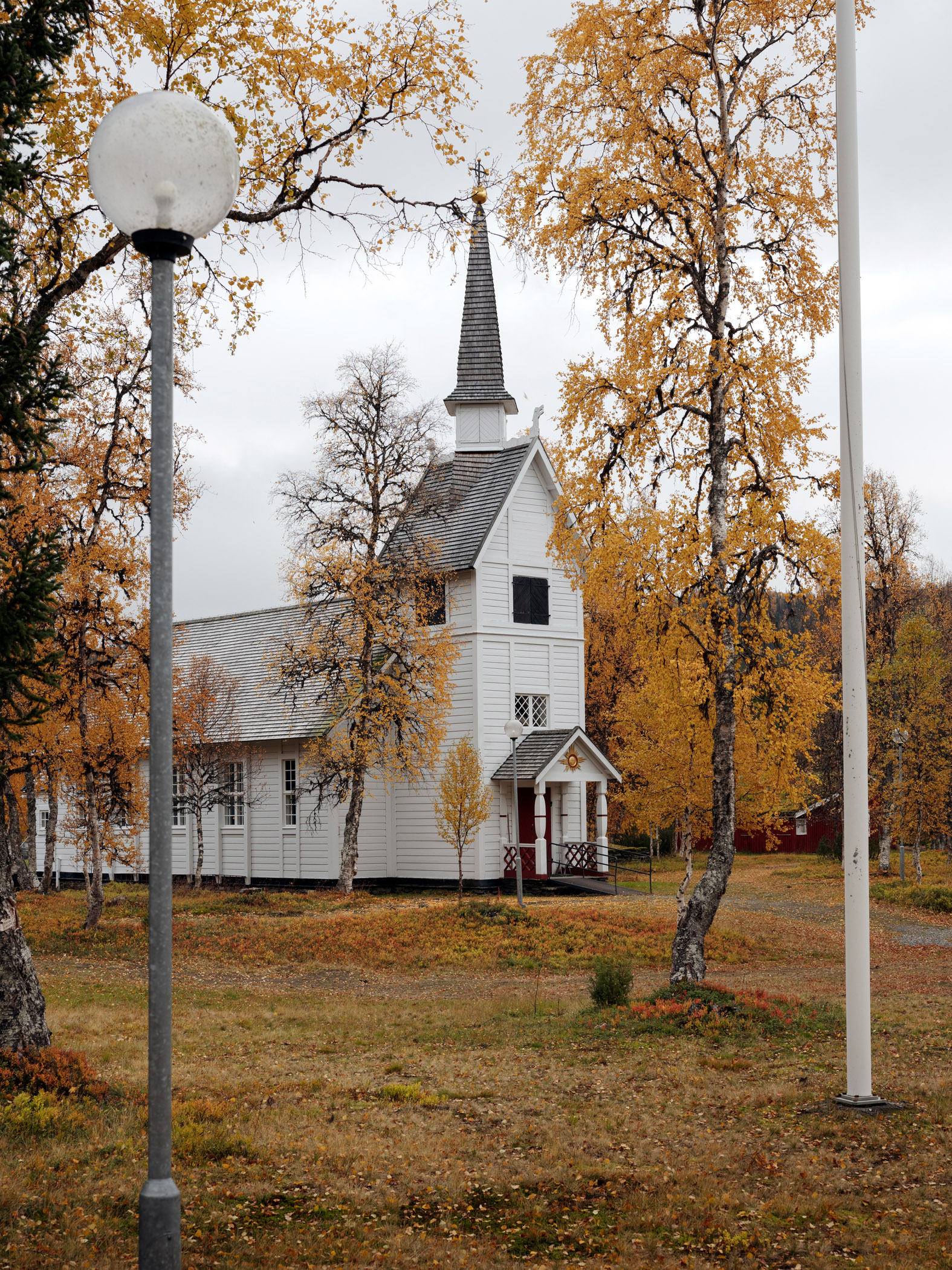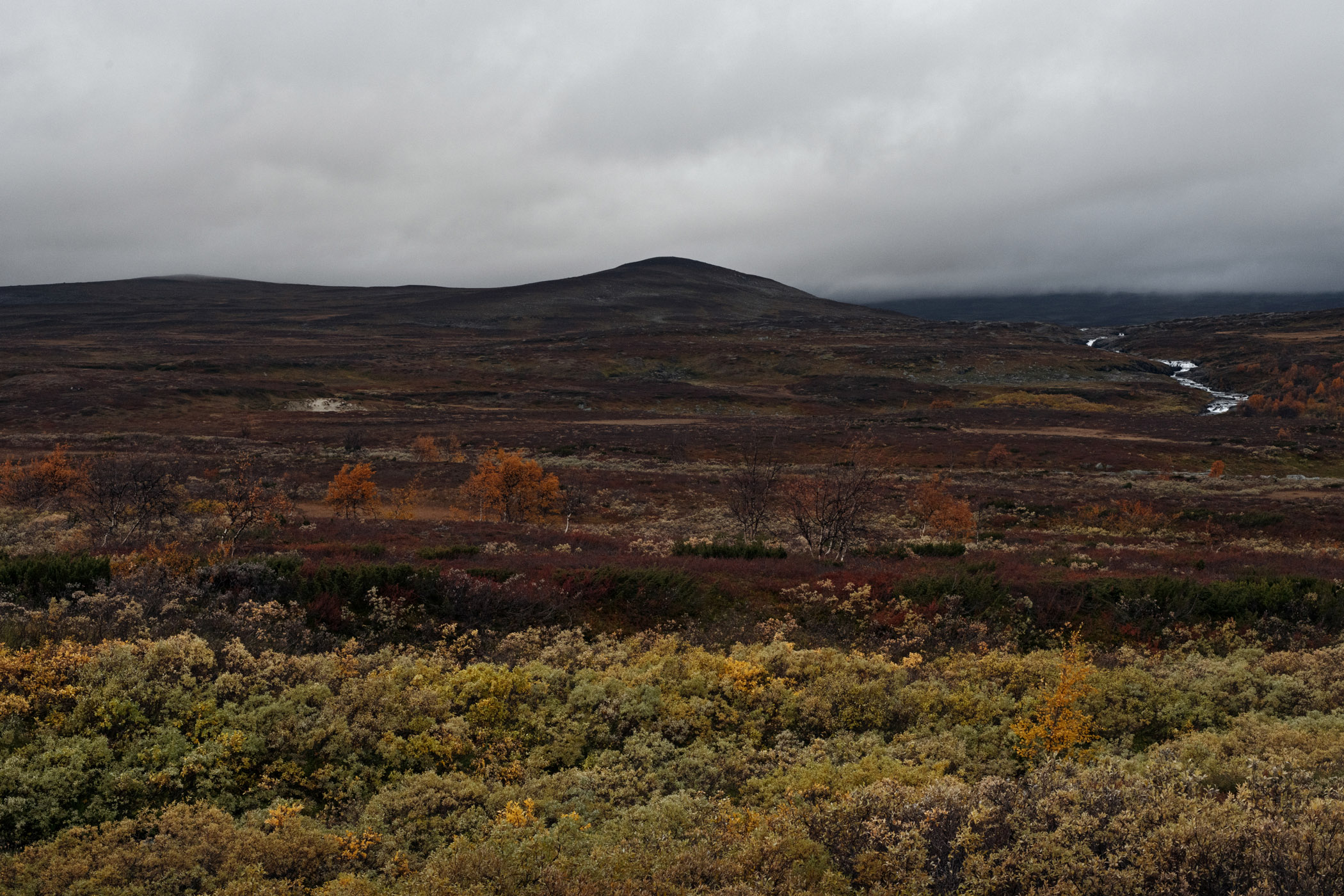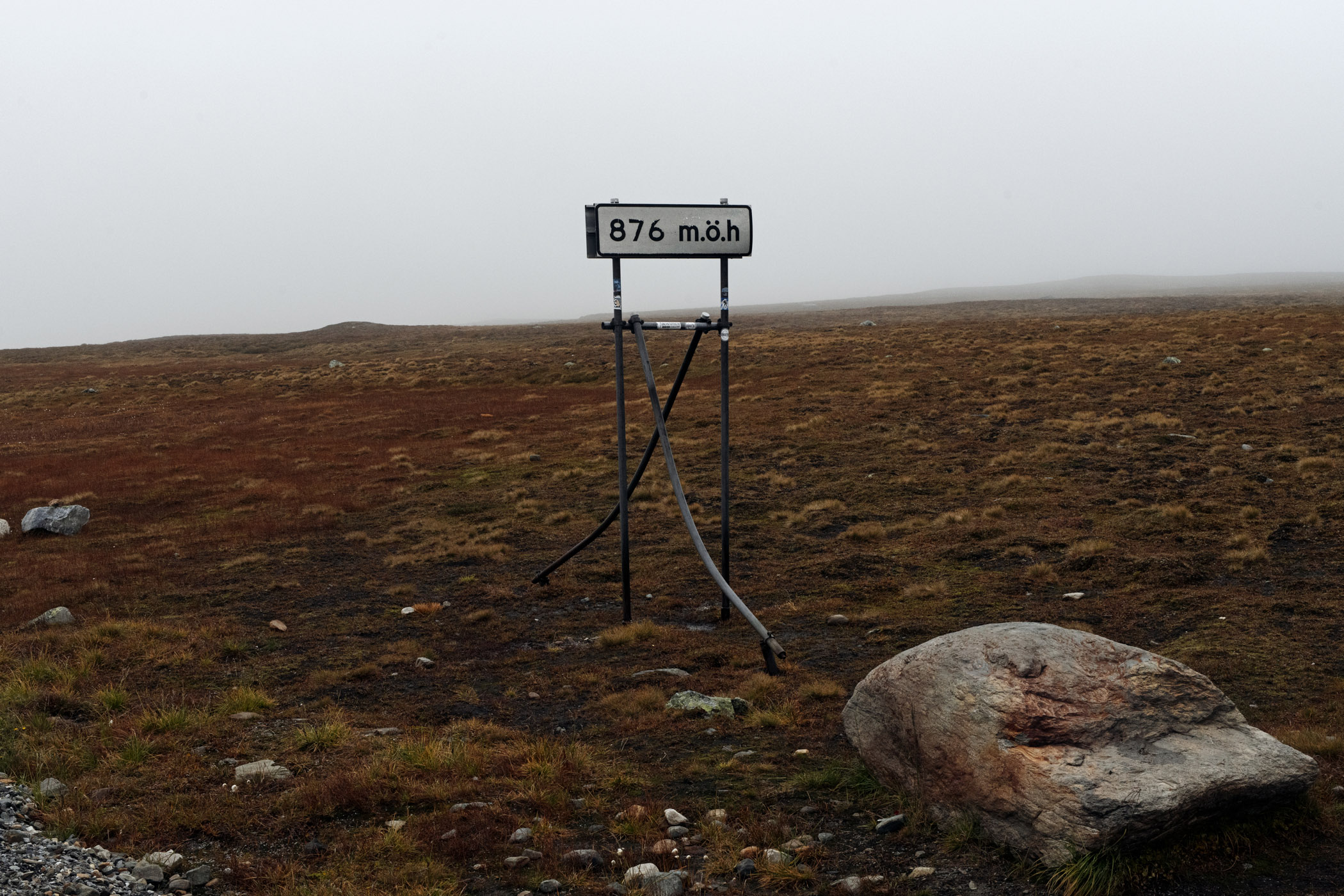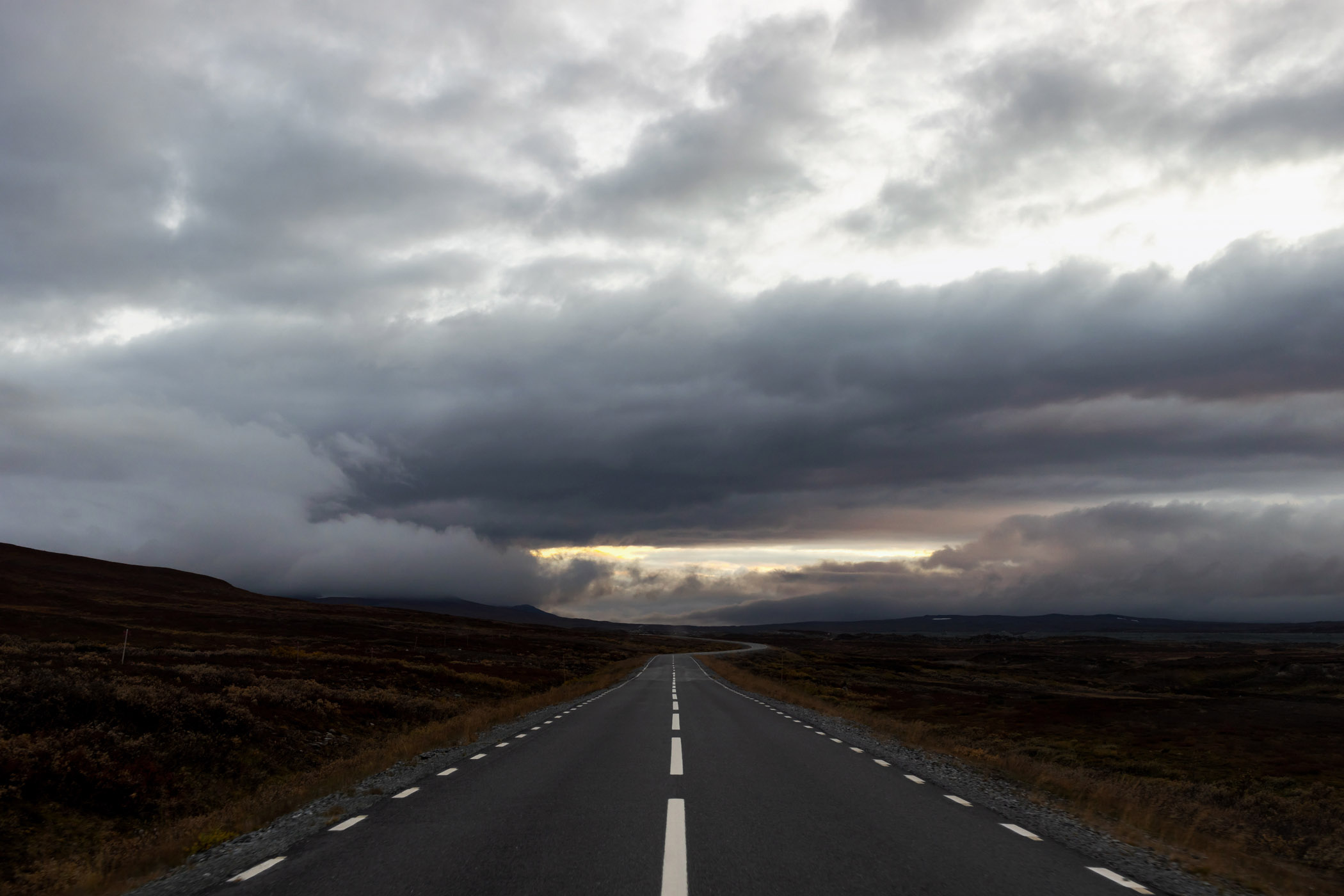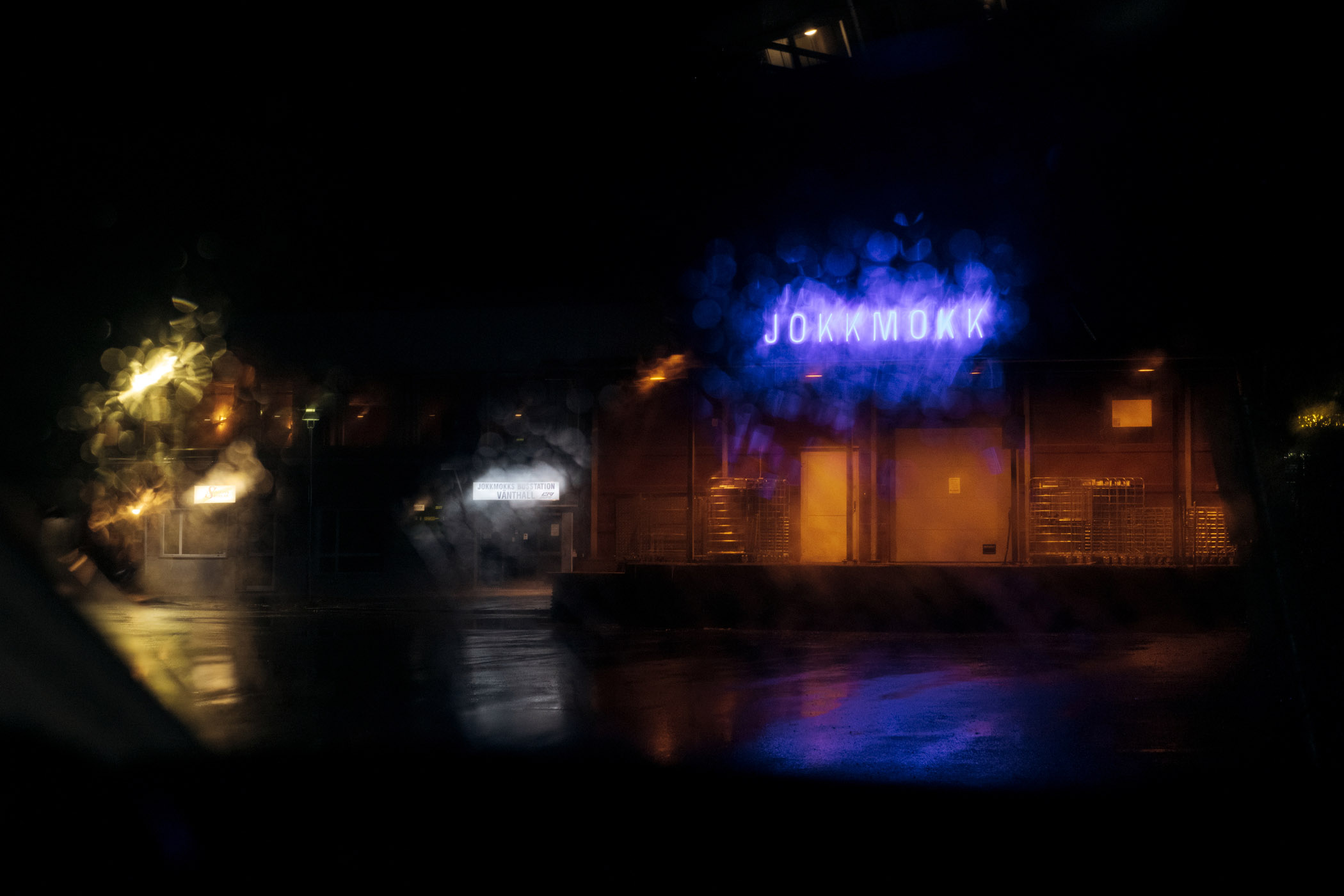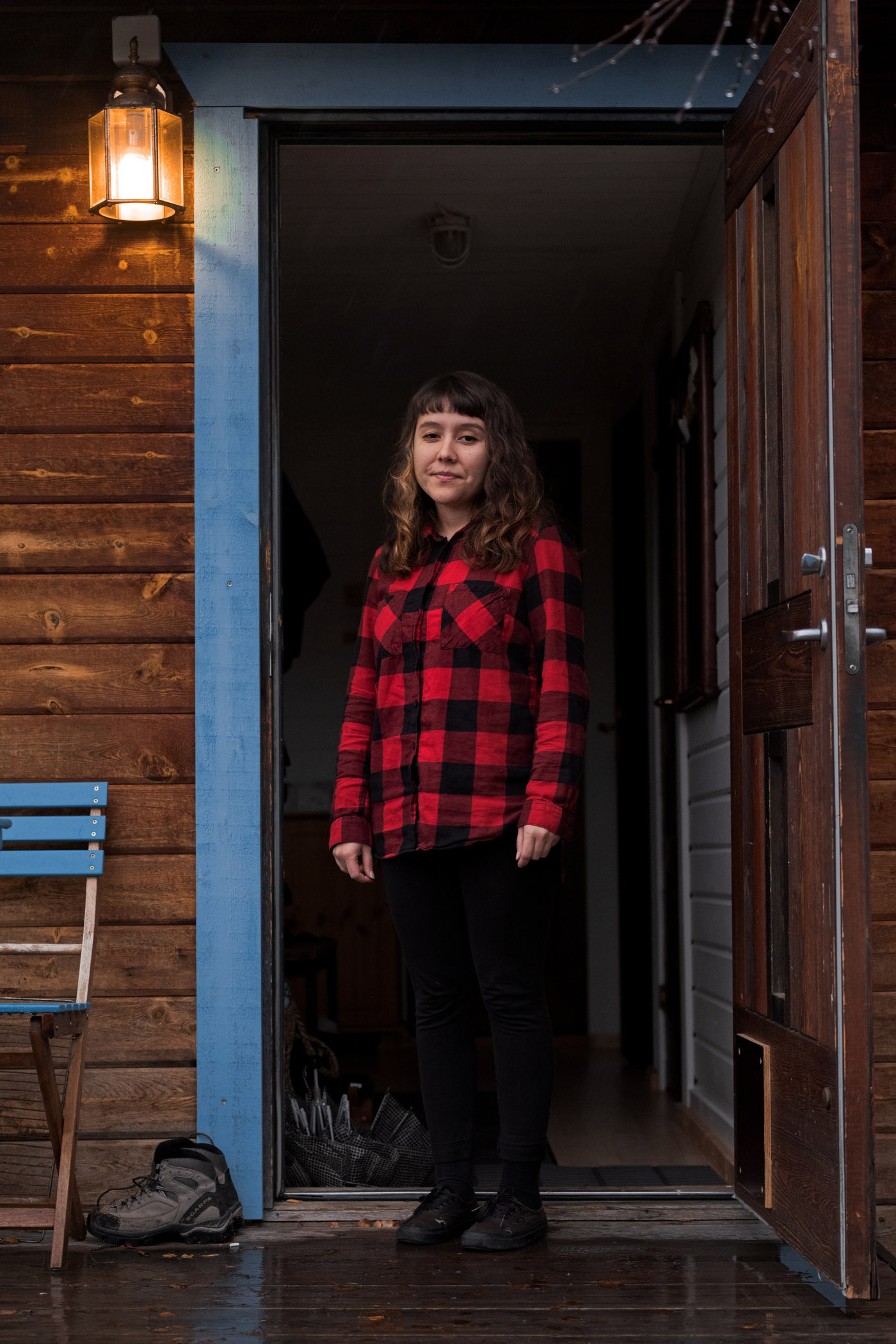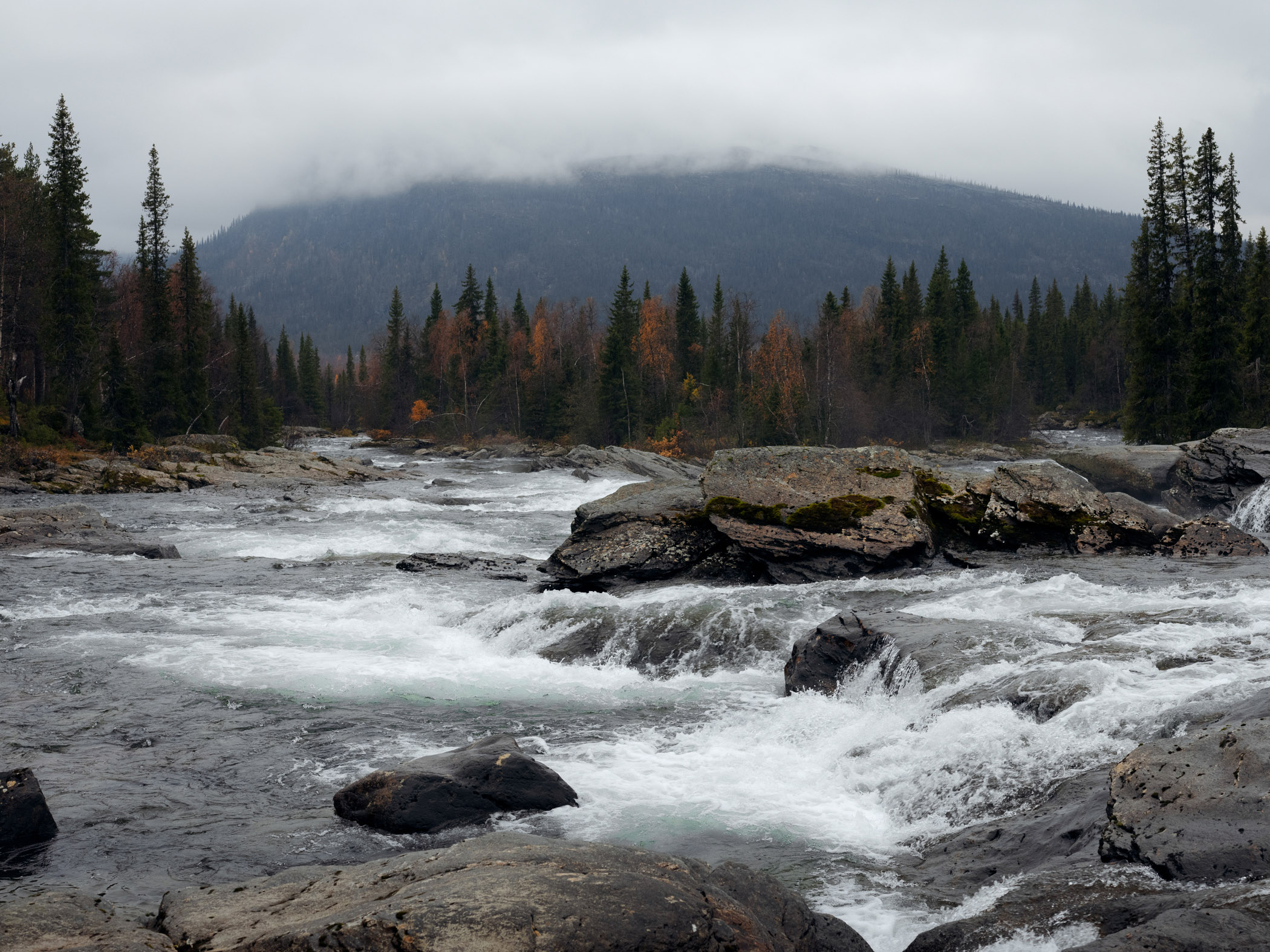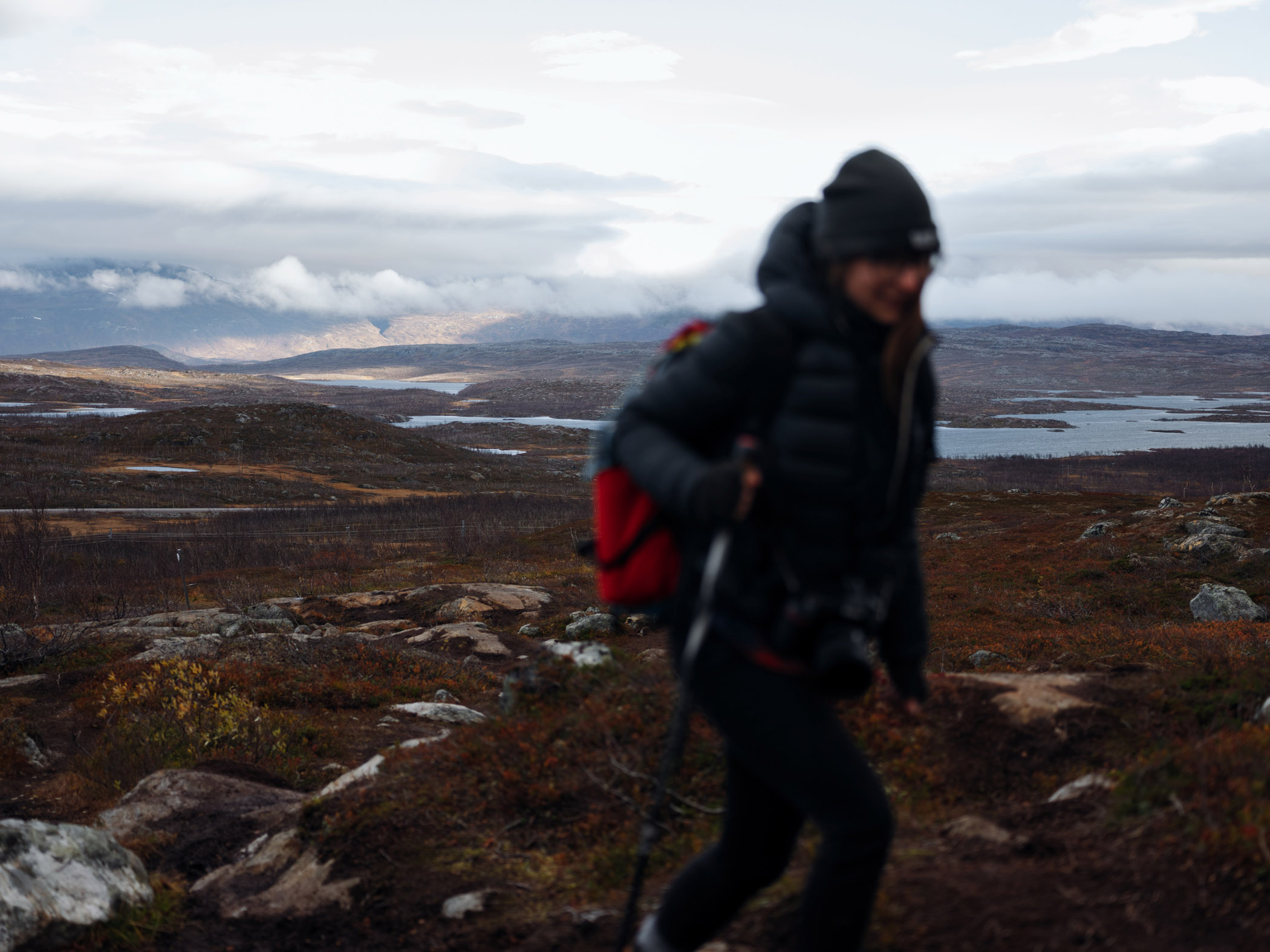Late summer in Berlin, a warm August in a year, which will go down in history. For the first time we are planning a trip without the certainty that we will actually be able to do it. Long weeks of waiting and the hope for open boarders. Finally, 4 days before our planned departure, the confirmation: At last we will be on our way North again.
The plan: Hamburg – Copenhagen – Stockholm – Lapland – Rovaniemi – Karelia – Helsinki + Turku – Åland – Bohuslän – North Jutland – Hamburg in 28 days.
The reality: On September 25th, day 5 on the road, Finland is closing its boarders. We are half way on our route to Lapland, latitude 62 and we decide: This is the North, from now on we will take it slower.
We pass the first four days in review, as 1.400km already lie behind us: After a quick stop at Coffee Collective in Copenhagen crossing the Öresund Bridge into Sweden. Our first campfire and the first swans, which – how we are about to discover – apparently go with each lake in Sweden. In Gävle we are visiting Swedens first Whisky distillery, Mackmyra, and spend the night in our first new favorite village of the trip, in Skärså. A robin greets us in the autumnal morning fog and in the evening the moon travels with us over empty roads. We pick blueberries for our breakfast, drink coffee in small bays and follow red wooden crosses on our first short hikes. Rotting Volvos greet us from abandoned properties and „Attention! Bear!“ from the street signs.
When we find out about the closure of the boarder, we are standing on a parking lot in Norrfjällsviken in the pouring rain, debating wether or not to take a walk through the nature reserve anyway. So as it becomes a fact, that we officially don’t have to go anywhere in particular now and have therefor all the time in the world, it is clear: We wanted the North, we wanted the weather! Rain trousers, improvised camera protection and let the wet games begin!
2 hours, countless stones covered in red lichen and horizontally pelting raindrops later, we are richer only about 5 good images, but one important realization: Everything is soaked.
Cameras, jackets, trousers – but also my feet inside my shoes and Constantin pretty much all over, despite his rain jacket.
The world heritage site „Höga Kusten“ („The high coast“) will be remembered for newly bought hiking boots and jackets above all else. Maybe we should return one day. Without the rain.
At the lighthouse „Korgubben“ we say goodbye to the Swedish Eastcoast. From now on the route will lead us into the emptiness, wilderness and loneliness: The Vildmarksvägen is calling, as is the Stekenjokk Pass – the door to Swedish Lapland.
We don’t have a clue what to expect, but our heads are filled with dreams.
It’s places like these, in which traveling with a campervan is playing its trump card. Thanks to “freedom to roam” and sparse population, we make camp wherever we want. Each morning we awake at a different lake, each day we count the hours in coffee stops in forests, at beaches, on the fjäll or at a waterfall. And each evening we just stop, when we feel tired from weather, landscapes and experiences.
Foggy forests and autumn gold accompany us at the boarder between the provinces of North Jämtland and Västerbotten. Dorotea (South Sámi: Döörte) with roughly 1.500 inhabitants does count as a bigger village, but even here we already feel like being at a last outpost before the wild. The cars are getting more massive, the people more rough, the winds more cold.
At Håfarkot we are hiking through a dense elm forest all the way up the Kolberget, but instead with far views across lakes and woods, we get rewarded with mystical mist between the heads of fir trees.
Generally fog and clouds seem to have taken over from the rain and are our alternating companions from now on.
Two nights we stay at the campground in Gäddede, washing our clothes, making back ups of our images, restock on food and stroll unhurried through the village. Its barely 4km to the Norwegian boarder and apart from us, there are only one other couple with their dinghy and a curious goose living on the campground. We are chopping wood in the evening light, eat Köttbullar and Potatis from our firebox and ask ourselves how it might be to wake by the water from now on and forever…
The morning light wakes us gently, we get up each day between 6:30 – 8:00 without setting an alarm. Before we strike out to the pass, two particularities are waiting for us here: We meet with Tommy in possibly the smallest microbrewery of all times, which he set up in the cellar of his grandfathers home, after moving there 23 years ago. And as the biggest possible contrast, we visit the biggest canyon in Sweden with the 43m high waterfall Hallingsåfallet – the question remains open which of the two was more impressive.
We follow a gravel road from Stora Blåsjön to Ankarede, a centuries old gathering place of the Sámi. The gold of the birches, roaring in the wind, is mirrored in the cross at the rooftop of the pearly white church – dragon heads at the corners observe quietly. By the riverside stand around 30 Samí tipis (Sámi: Goahti) with handles made from reindeer antlers.
We are nearing the fjell and the tree line. Stekenjokk is one of the coldest places in Sweden. Only a few more weeks from now and winter winds will sweep over the plane and the snow will pile up meters high.
But today we feel as if we we’re driving through a limbo, our daily life seems farther away than ever before. In a fresh green, a juicy golden yellow up to a deep crimson, carpets from mosses and grass cover the ground. Fast fleeing clouds are carrying a wind, that fills my mind with its whispers.
Before the distant mountain slopes, a reindeer herd is grazing in the hilly range, the leading animals clearly visible. These lands belong to them and their herders.
My camera is hanging unnoticed at my side, time and location are losing their meaning. I know that Constantin will provide the images; I’m standing still, marvel at the scene and collect my words. This moment is going to be one of the few, that will take root in our mind as the essence of this place. Its feelings will forever stay present; its weight, temperature and melody we will retrieve whenever we think of Sweden. And as we step back into the car, we smile at each other, happy, grateful, without words.
Quiet and emptiness accompany us on the following days. We’re visiting another Sámi village, Fatmomakke, at least 250 years old. Over a narrow bridge we reach a peninsula, wooden tents and storehouses are spread over a larger area, lie hidden behind trees and hills. At the central fairground a „Maystang“ is standing lonely and abandoned, white lace curtains hide what lies behind the windows. Wooden planks, broken or being bogged down, the church locked. I can sense the ancestors here, feel happiness and sorrow alike, as no one is here to share their stories.
Driving on dusty potholed tracks with wooden power poles at their sides, we feel reminded of Canada or Alaska. We didn’t expect such loneliness, underestimated the vastness, the trees rolling by endlessly. We are sleeping at yet another mirror lake, wash ourselves at dawn in its icy water.
Arvidsjaur, firmly in the hands of tourists and car enthusiasts for most of the year – new models are tested here in wintertime and “Erlkings” can be spotted – feels deserted as well and we only stop briefly to buy cloudberry jam and blueberry tea in a little store by the road.
As rarely as we come across other people, as often we encounter vintage cars in the ditch, on scruffy courtyards and at random crossroads. And while we’re debating the incidence of Volvos, we’re crossing the Northern polar circle almost unnoticed. We reached Norrbottens Iän, the northernmost province of Sweden, carrying two reindeers on its coat of arms. Almost a quarter of Swedens land area, but not even 3% of its population live here.
With the last light of the day we reach Jokkmokk (Jåhkåmåhkke or Dálvvadis in Sámi), Swedens center of Sámi culture, and end at „Skabram“ campground completely by chance. We meet Bruno + Fran, two Chileans, who are managing the campground for almost a year now and who – as it turns out – also lived as Sous-chefs in Berlin a couple years ago. In the middle of the most solitary region, we suddenly find company and somewhat of a temporary home.
Our van will find a regular spot here, from which we’ll start our day trips. We’ll spend the evenings together with Bruno and Fran by a campfire, roasting reindeer steak from the local Sámi butcher „Sápmi Ren + Vilt“ and sharing stories of travels and foreign countries, of home and the meaning of existence. And in the morning the two of them are pleased about our brought along coffee, as „specialty coffee“ is not to be found anywhere up here.
We had a lot planned for the high North. But continous rain and low visibility prevent helicopter flights across the stunning landscapes and even longer hiking trips wouldn’t be possible without real danger for beginners like us. At the first of many rainy days we decide to take it slow and just start with a short hike on the Hollandleden, bordering the campground. Wilder than expected, as we find a chunk of surprisingly large bones at the top of the highest hill. We assume that this is kinda normal here, but the surprised faces of Bruno and Fran teach us differently as we return.
They too are not really sure what we’ve actually found in the woods. Slowly I begin to understand why so many crime novels tell stories located in the North…
Still dozy we get wet feet in the morning, as a small puddle has formed around our van; it is still raining. We’re driving to Kvikkjokk fjell station, hike quite a while towards Kungsleden and have to notice that Sarek National Park, which was a very high priority on our list, not only exceeds our ideas of size and seclusion, but also of accessibility for newbies like us, by far.
This time it will only be a first impression – we conduct ourselves in humility; we won’t grant disappointment, being beyond lucky to be on such a travel in this challenging year.
Near Granudden a fortunate coincidence: On a promontory just by the road a reindeer herd.
And what a spectacle! A young wild male is trying to snatch at least one of the females from the obvious leader of the group. He gathers the courage, then approaches the majestic lead animal proudly and confidently, who seems rather unimpressed. But as soon as the youngster moves too close, the chief defends his harem and the lonesome contender runs off into the distance again, long before a serious fight would start. The females remain lying at the shoreline or nibble at some bushes.
Admittedly slighly amused we begin our way home, where a real feast is waiting for us at our friends’. Tired, satisfied and replete we fall into a dreamless sleep.
In an early morning chill we decide spontaneously to visit the last town before the Norwegian boarder. A distance of 390km, Abisko lies on the same level as the Lofoten Islands. Birches and fir trees become shorter and slowly the fog is descending. Kiruna drowns in a thick Grey, that swallows each ounce of daylight; the huge iron ore mine can only be guessed. The temperatures fall noticeably, Abisko emerges as little more than a basecamp and as we drive the very last meters until the Norwegian boarder, even this place seems deserted.
The outer emptiness suddenly becomes an inner state as well. A filled void though, being without a task or even another destination left. In this very moment we are simply here, at Swedens northern end, farther north than we’ve ever been.
Slowly but steadily autumn is saying its goodbyes: With a felt temperature of 2° and fast flying storm clouds above our heads, we start well wrapped to our hike destination of today; Rissajaure, Swedens clearest lake. Ahead of us roughly 900 meters of altitude and the Kärkevagge valley (Sámi: Gergevággi), filled with eschatological boulders; the steep cliffs of Vassitjåkko and Kärketjårro frame the scene, with snow from last winter still on their peaks. Delicate waterfalls flowing down the jagged rocks like silky strings, being dispelled by the winds. Narrow footpaths end at gigantic crags; we climb, tramp and goggle. The shapes and shades are constantly changing, sometime colourful shambles lye at our feet, appearing like broken porcelain; sometime the dark rock is layering vertically in big blocks. Some 9.000 years ago the icesheet of the last glacial period melted here; since then this valley remained almost untouched and even hikers rarely find their way here.
Hidden in a natural windshield of almost black rocks, we discover a small research hut of Swedish geologists. The wind gauge is spinning into dizziness. Behind each ridge another valley appears.
We’re not paying attention to the passing of time, but immerse ourselves fully into this experience of nature, follow the narrow trails with curiosity of children. Until it suddenly appears right in front of us:
The end of the Kärkevagge valley, a vertical cliff; a rivulet falls into the deep blue and mirrorlike Trollsjön, the lake we were looking for, lying before us in the valley basin.
It is going to become a symbol for the end of our travel. Our driving direction is going to change, the inner empty space is giving way for a potpourri of all the emotions there are. With one eye joyful, the other tearful – from the frosty winds – we reach the car. A small snack, cinnamon buns and coffee. Shortly after Abisko the rain returns. Lake Torneträsk waves us goodbye with a cheesy rainbow, but only a few moments later everything is dipped into fog again. As we reach Kiruna, we now have to envision not only the mine, but the whole city; with walking speed we’re navigating through the night.
Back in Skabram our last hours in Lapland break. It is here, where it is to begin the next morning: Our long way South, our way back home.
Photography
Constantin Gerlach, Laura Droße
text
Laura Droße





